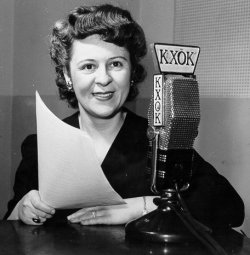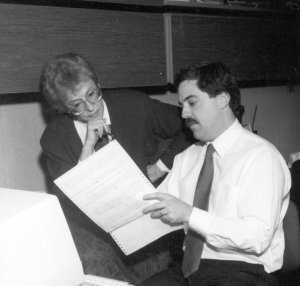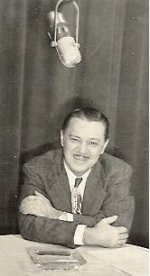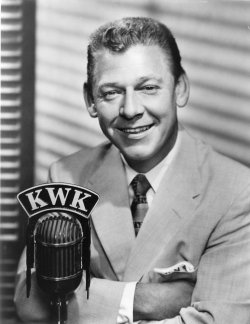Radio Articles
Kay Morton – Female St. Louis Radio Pioneer
When she began her radio career in 1939, she was known as Jane Foster. That was on WTMV, the progressive little AM station in East St. Louis. By the time she left the broadcasting and free-lance business a couple decades later, Kay Morton was a local celebrity. Now, as Ruth May Markus, she’s enjoying retirement in the Metro East. When she reminisces about her broadcasting career, she has no trouble holding the attention of her audience.
She joined the WTMV staff immediately after graduating from Washington University. There was no pay, just 25 cents a day to cover her bridge fare from St. Louis to East St. Louis. The studios were in the Broadview Hotel, and the town was bustling. She was given her own program, a half-hour women’s show five days a week. Of course, she had to line up her own guests and write her own scripts. When she began selling commercials she was able to generate some income.
“I used to go out to the airport at 2:00 in the morning (Thank goodness I had tolerant parents.), meet people, chat with them, bring them back. We didn’t have limos in those days. You picked them up and fetched people, doing it all yourself.”
When she moved to WIL in the early 1940s, Markus was given the name Kay Morton by program manager Dave Pasternak. Again, her job was to produce a daily program for women. Again, it was up to her to find guests whose subject matter would be appealing to her audience.“In October of 1941, I got to interview someone from the cultured pearl industry, and it turned out to be a very interesting Japanese gentleman. He found out I was going to be married the next month and he gave me a very beautiful string of pearls which I thoroughly enjoyed – wore on my wedding day walking down the aisle. Less than a month after that the Japanese bombed Pearl Harbor. On Dec. 10, I was visited by the FBI. My pearl expert was one of many Japanese who had gone to radio stations around the country whose towers were on rooftops, and they turned that information over to their government. I still have the pearls.”

In 1943 Kay Morton moved from WIL’s Melbourne Hotel studios to the Star-Times Building in downtown St. Louis, the home of KXOK’s studios. “I worked with Harry Caray there for awhile. He and I did a thing about Hollywood and we’d get to giggling so much that they eventually had to reassign us. We had a 10-piece orchestra in the studios at KXOK; Ralph Sutton was a member, Bobby Swain who was a symphony violinist, Orville and William Klein.”
In those days there were engineers who did all the technical work in radio, and the announcers and talent worked out of a separate room. Engineers were also needed every time the station did a remote broadcast. “One of them, Ed Henry – I had to do an interview in a lion’s cage with Clyde Beatty. Of course, I was holding a little lion, and poor old Ed Henry just stayed outside and handed me the microphone through the bars. He refused to come inside.”
Ruth May Markus has lots of memories. During her work in radio she had the presence of mind to keep an autograph book for all of her guests to sign, and a glance through the yellowed pages yields some familiar names: Fannie Hurst, Sonja Henie, Duncan Hines, Karl Wallenda, Clyde Beatty, Claude Pepper, Cesar Romero and Edith Head.
“I was making $25 a week at WIL and KXOK, but I don’t know of anything I would rather have done in life. My being a woman made no difference one way or the other. I think the men I interviewed were a little nicer and maybe even a bit surprised that I knew what was going on.”
(Reprinted with permission of the St. Louis Journalism Review. Originally published 3/1999)


